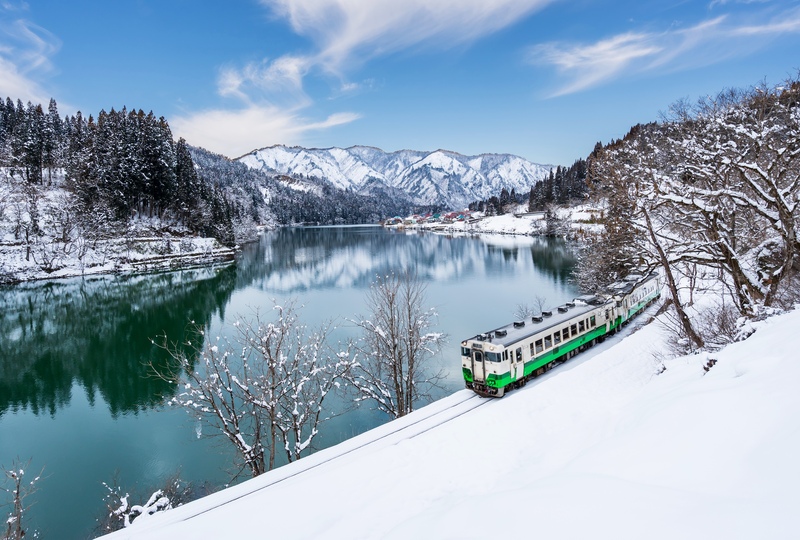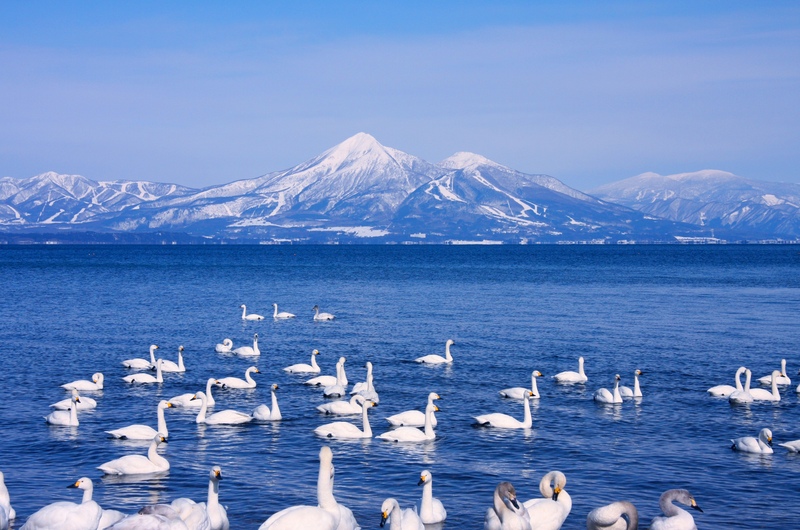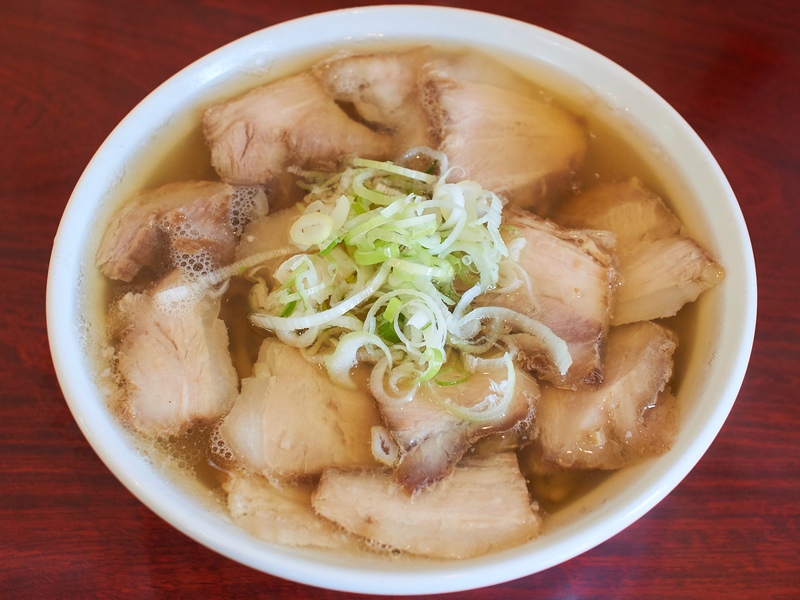What is Ouchi-juku in Fukushima Prefecture? Experience history and atmosphere in a traditional Japanese post town
Ouchi-juku (Ouchi-juku) is a traditional Japanese post town located in the Minami-Aizu area of Fukushima Prefecture.
This area, with its beautiful row of thatch-roofed houses dating back to the Edo period, is a popular destination for international travelers who want to experience traditional Japanese culture and history.
Ouchi-juku, where the old-fashioned charm and a nostalgic atmosphere linger, offers an experience like stepping back in time.
This article covers Ouchi-juku’s history and attractions, the best seasons to visit, and useful information for when you actually go.
Here we introduce Ouchi-juku in detail — a must-see for visitors to Fukushima Prefecture.

1. History and background of Ouchi-juku
Birth and role as a post town
Ouchi-juku prospered in the Edo period as a post town on the Aizu West Kaido, which connected Aizu and Nikko.
The Aizu West Kaido was an important route linking Edo (now Tokyo) and Aizu, responsible for transporting goods and information.
Because of this, Ouchi-juku developed as an important base where travelers could rest, eat, and resupply.
Today, its historical value and beautiful streetscape are carefully preserved, still strongly reflecting its appearance from that era.
Preservation efforts and modern Ouchi-juku
In 1981, Ouchi-juku was designated as an Important Preservation District for Groups of Traditional Buildings.
With the support of local residents and visitors, preservation activities continue to pass on the Edo-period atmosphere to the present day.
About 30 thatch-roofed houses remain in the area, offering visitors a glimpse of Japan’s traditional scenery.
It is also attracting attention as a place to experience the preservation and revival of Japanese culture, and its historical value will continue to be protected.

2. Highlights of Ouchi-juku
The thatch-roofed streetscape and its features
What first catches the eye in Ouchi-juku is the distinctive streetscape lined with thatch-roofed houses.
The scenery looks like a period-drama set, drawing visitors into the atmosphere of the Edo period.
The landscape changes with the seasons, and the snowy scenery in particular is as picturesque as a painting.
Preservation efforts for these traditional buildings help ensure that Japan’s old streetscapes will remain for future generations.
Panoramic viewpoints from the hill
You can get a full view of the village from the observation deck up the stone steps at the back of the Ouchi-juku settlement (next to Koyasu Kannon Hall). The stone steps are steep, and in winter it is common to use a detour.
This viewpoint offers beautiful seasonal views — cherry blossoms in spring, lush greenery in summer, colorful leaves in autumn, and snowy scenes in winter — so you can discover something new each time you visit.
It’s also a popular photo spot, perfect for capturing lasting memories of your trip.
3. Experiences to try in Ouchi-juku
Negi-soba: a famous dish enjoyed in an unusual way
Ouchi-juku’s specialty dish, negi-soba, is famous for its unique way of eating.
Instead of ordinary chopsticks, diners use a long green onion (negi) as chopsticks — a style that surprises many visitors.
The flavor of the soba combined with the green onion’s taste makes a delightful match, and it’s often featured on social media.
When you visit Ouchi-juku, be sure to try soba in this memorable, unusual way.
Sobagaki: a traditional dish that brings out the true flavor of buckwheat
Sobagaki is another dish you should try in Ouchi-juku.
Made simply from buckwheat flour and water, this dish highlights the aroma and flavor of the buckwheat itself.
Sobagaki is known for its chewy texture and slightly sweet taste — simple but deeply satisfying.
Enjoyed with local ingredients, it becomes even more delicious.

Staying in a thatch-roofed house
In Ouchi-juku you can stay in traditional thatch-roofed houses.
At night you can enjoy the quiet atmosphere of the post town, and stargazing is another attraction.
Hospitality from local hosts and time spent in these traditional homes offer a valuable chance to experience rural Japanese life.
You can forget the noise of the city and refresh both body and mind.
4. Ouchi-juku’s seasonal charms
Spring: contrast of cherry blossoms and fresh greenery
In spring, Ouchi-juku and its surroundings are decorated with cherry blossoms, which, together with the fresh green mountains, create a beautiful landscape.
The best time to see them is usually from late April to early May, when classic Japanese spring scenery unfolds.
Summer: cool shade under green tunnels
In summer, Ouchi-juku is surrounded by verdant trees and cool breezes.
It’s popular as a summer retreat where you can relax in nature and escape the heat.
Enjoy the beautiful natural scenery and the feel of rural Japan.
Autumn: colorful foliage and festival atmosphere
In autumn, the streets of Ouchi-juku turn red and gold, offering beautiful fall colors.
Local residents hold traditional autumn festivals, providing a great opportunity to experience Japanese culture.
Winter: magical snowy scenery and illuminations
In winter, Ouchi-juku is covered in snow and the thatch roofs turn pure white.
The nighttime illuminations are magical, transporting visitors into a dreamlike world.
The snowy Ouchi-juku is incredibly beautiful and presents a special appearance seen only in winter.

5. Practical information before visiting Ouchi-juku
How to get there
- Train and bus: From Tokyo, take the Shinkansen to Koriyama Station, then go via Aizu-Wakamatsu Station and take a bus to Ouchi-juku.
- By car: If you drive, be mindful of heavy snowfall in winter. Studded winter tires are essential during the winter season, so prepare in advance.
Visitor information
- Opening hours: Ouchi-juku is open year-round, but shops and restaurants often close early, so visiting in the morning is recommended.
- Fees: Strolling through the streets is free, but some facilities may charge admission, so check in advance.
Accommodation
- Staying in thatch-roofed houses: Several traditional houses are available as accommodations. Reservations are required, so confirm when planning your trip.
- Local meals and hospitality are highlights, offering a chance to experience life in the Japanese countryside.
Summary
Ouchi-juku preserves the charm of old Japan and provides a valuable opportunity to experience its history and culture.
With its seasonal natural beauty and the thatch-roofed post-town streetscape, Ouchi-juku is a recommended destination for travelers from abroad.
When you visit Fukushima Prefecture, be sure to spend an unforgettable time at this special place.
Frequently Asked Questions (FAQ)
Q1: How long should I plan to stay in Ouchi-juku?
A: If you just want to walk around the streets, eat, and buy souvenirs, allow about 2–3 hours.
It’s also recommended to combine Ouchi-juku with nearby attractions and spend half a day to a full day exploring the area.
Q2: Is English available in Ouchi-juku?
A: There are few English signs and pamphlets, but major tourist facilities have basic English information.
Researching information in advance will help you enjoy your visit more smoothly.
Q3: Can I visit Ouchi-juku year-round?
A: Yes, you can visit year-round, but winter brings heavy snowfall, so make sure you prepare for travel and cold weather.
Enjoy a trip to Ouchi-juku in Fukushima Prefecture and experience Japan’s history and natural beauty.









